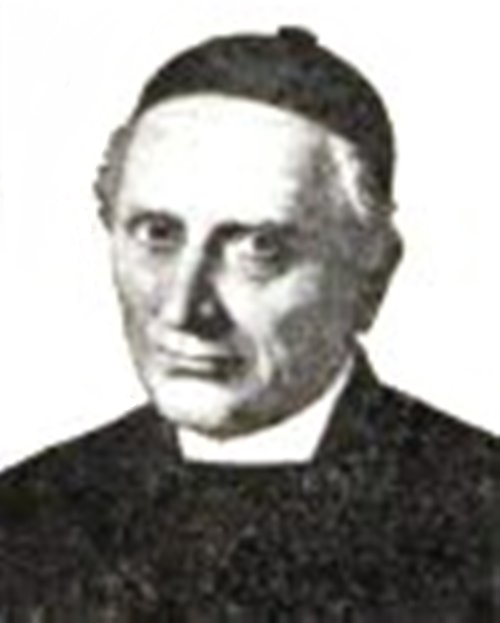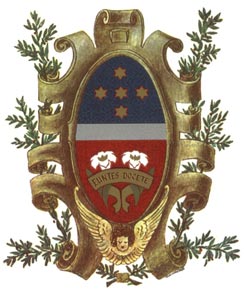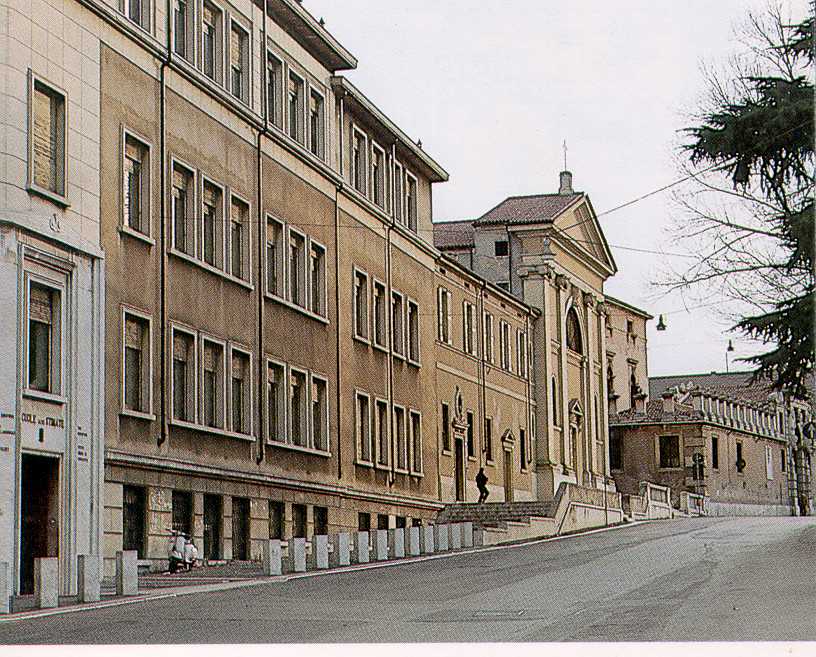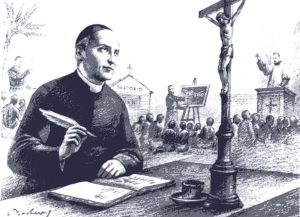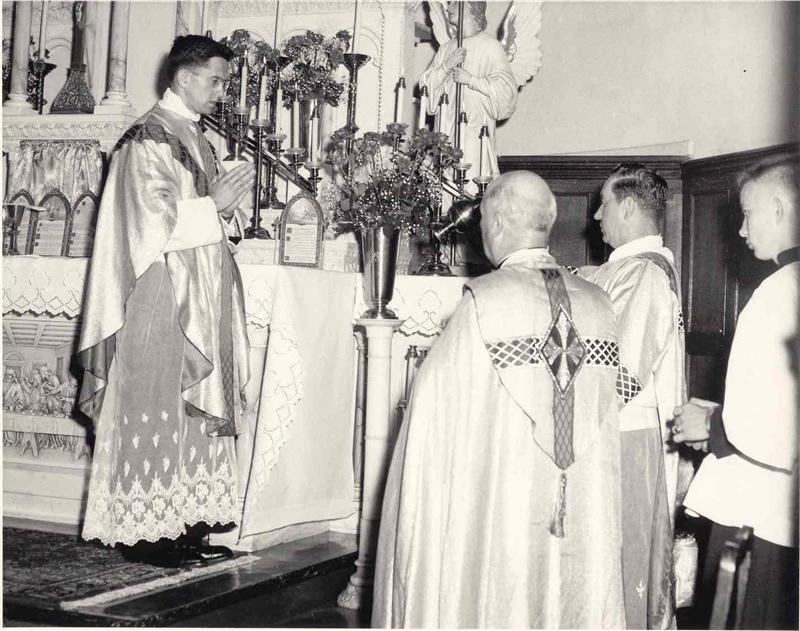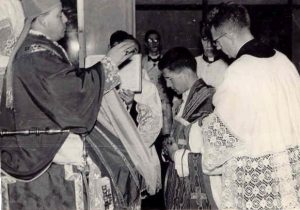Rev. Joseph Henchey, CSS
Homily in the anticipated commemoration of his
60th Anniversary of Ordination to the Holy Priesthood
[Rome, July 1, 1956]
Mundelein Seminary
May 4, 2016
My dear sisters and brothers in Christ. I thought I would comment tonight on the Communion Antiphons. “I have chosen you from the world,” says the Lord, “and appointed you to go out and bear fruit, fruit that will last, alleluia.”
INTRODUCTION
OLD AGE: GRACE & MISSION
And I want to say there’s really nothing to getting old. It just takes a while. Sometimes you know they call these the “Golden Years”. Well, that may be for our hard-working doctors and dentists but for us who are doing this to a task, ‘rusty’ might be a better metaphor.
You know this is that time of life when everything hurts and nothing works. I once thought of a prayer for an old professor, “Oh Lord, may I be judged on the many brilliant students I had – more than on my boring lectures.”
Many modern adaptations appear of Aesop’s Fables, animals talking to human beings to give them a lesson. One of these you may remember is in Kafka, his Metamorphosis. It’s a very ugly passage where he compares animals to people. But Alexander Solzhenitsyn had a wonderful idea in Cancer Ward and his old goat that I’ll tell you about the end.
The great American humorist, W.C. Fields, tells the story of the King of Beasts was renowned for his speed and his power. But he wanted also to be remembered as well for being crafty, being smart. So he circled behind two hunters and found their camp and enjoyed himself on their baloney sandwiches. [They really seemed like horseradish mustard!] Then he went to the top of the mountain and he roared, “I am the King of Beasts and I am crafty too.” The hunters, of course, heard this and came and killed the lion. So what is the moral of this? If you’re full of baloney, keep your mouth shut.
Anyway, I also remember George Burns who had a number of wonderful lines. He says, “You know it’s really great to be 90. You get a standing ovation for standing.”
Well, my great hero is Father Charles Meyer, formerly a member of this Faculty! When I entered the seminary for a 10-year hitch, he was already ordained a priest. So he’s 71 years a priest now this year.
Well, I want to tell you, in the long years of studying Saint Thomas Aquinas, it’s a very rewarding enterprise. And I wondered if somebody someday with more brains than I had could write a tract on the Eucharist and the priesthood. Saint John Paul II never tired of bringing these together as they were instituted together on the first Holy Thursday. And just think of the humble material element of the Eucharist which will contain the sovereign Lord of Heaven and earth. It could start out as old sour grapes and dry bread but God’s holy word of consecration transforms that into a real presence.
What is a material element of the priesthood? It’s a man who has been tried and proven and sometimes offering only sour grapes and old dried bread. But in the words of consecration, he is endowed with a marvelous life-giving, forgiving, capacity. In the theology of Saint Thomas, I was always amazed at Italian wine. In it is a deep interior passivity, of capacity to be consecrated. Well, so do we. And the other part of this comparison is: Italian wine gets better with time! And I really think that’s what happens.
Charles Dickens was only half right. He said, “These are the best of times and these are the worst of times.” These are the best times. Give us this day our daily bread. And as we sang all the way through Easter: … Haec est dies quam vere fecit Dominus – laetemur et exultemus in ipsa! – This is the day the Lord has made!! Let us rejoice and exult in it!] I wanted to impress you with my Latin, (??). How’s that?
Anyway, Saint Thomas will tell us again: these are the best of times for that which God wants to accomplish in us. So it’s the best of a possible world for the present divine purposes, no matter how terrible it is. How we worry about elections. This is the best time because God can create a universe out of nothing. So Saint Thomas said, “These are the best of times for what God wants to do on earth.”
STIGMATINE CHARISM
I’d like to say like a short word about my own Stigmatine Charism. You know, I’m only ordained 60 years, but I promise not to take a year at a time! I’ll talk of Mercy. My Founder [St. Gaspar Bertoni] was a diocesan priest of Verona, Italy Fr. Gaspar Bertoni. He came from a broken home, so he developed the old Franciscan feast of the Espousals, of Mary and Joseph. It’s a beautiful family festival we celebrate every January 23rd, indicating a real commitment to the Church, the Spouse of Christ.
He was also a priest for 53 years, 41 of which he was an invalid. And from this he developed his great devotion to the five wounds of our lord. So the well-known Icon of Mercy, the suffered five wounds of Good Friday redeem us. And the glorious wounds of Easter Sunday in his risen body become the Source of His sending us. As the Father sent me, I now send you. [Jn 20] So the Pierced One is a great drawing card for mystics like Augustine and many, many others.
A new era has come. A birth of the new Eve in blood and water indicating a new life has come. If you look at the icon carefully, the springtime of the blood ritual is in harmony with the autumn celebration of the harvest at the water gate. What does this mean? All of human life, spring and fall, is enveloped in God’s mercy.
The Tabernacle of the Trinity, which the Roman soldier opened with his lance, has opened to us the treasures of the Trinity. Augustine saw here the sacraments of Baptism and Eucharist. The new catechism speaks about the open wounds mean Christ’s open heart. The heavens were opened and the scriptures were opened. Let us not harden our hearts and close them out.
In the five wounds, there is a shifting theological model, which is very interesting. The wounds of the hand and feet, [remembered by Luke the doctor??], are called “satisfaction and meritorious redemption”. But all that was inflicted on the body of Christ after his death: his pierced side, his burial, the terrible desecration of his dead body [which we see almost every night on the news] all of these are included under causal exemplarity with resurrection and ascension. A new creation has opened up, a new beginning!
So the great dogma of the stigmata would be redemption. We are redeemed. Thank God for its grandiose blessings and as Gregory the Great [if he was indeed the author of Hoy Saturday’s Exultet said, (O felix culpa – quae meruit talem et tantum Redemptorem!): O Happy Fault which merited such and so great a redeemer! Paradoxically, what a wonderful thing that it because of sin there is merited in God’s Mercy such a Redeemer such redemption.
This mystery is an enrichment to moral theology. If Christ has risen let your thoughts be above. It’s also an inspiration to spirituality. One of the things we all lack is a sense of totality. Like the ancient Shema Yisrael, the basic dogma is one God. The basic morality, love him and his – and the basic spirituality, totally.
The new catechism speaks about the scriptures being opened with Christ’s wounds and Christ’s side being pierced. This is the season we celebrate the Ascension into heaven. He is seated at the right hand of the Father. He’ll come again in glory and all will see him [we read in the Apocalypse 1:7] – even those have pierced him – in faith, we will see him in contemplation and – God willing – in our studies. We will see this Son of God pierced through. Whoever sees me, sees the Father.”
This reminds us of that old American spiritual, “Were you there when they crucified the Lord?” We were. We caused it and we were redeemed there. So to look on him – means to study him, to experience him. And in the words of Dei Verbum [# 8]: faith can grow through contemplation, study, magisterium and experience.” The Acts of the Apostles sing of this joyful assembly. They return to Jerusalem with great joy. They were continually in the temple blessing God, worshiping the immolated lamb in Thanksgiving, a model of the Church in the Celestial Sanctuary.
The ascension of Christ does not mean inaccessibility. There is a perennial closeness, an ongoing presence of the Lord. And, in a new manner, this Mystery is now inviting each of us; while we cannot be transubstantiated, we need to be transformed and conformed more to the image of the wounded Christ.
So what we celebrate in every Liturgy is a Liturgy of Life. All of life is an offertory in Romans 12:1. “Make of your body an oblation to the merciful God. It’s a consecration. The Father consecrated me and sent me into the world. It’s a holy communion. I and the Father are one.” It is a Holy Communion – The Father is in Me and I in the Father … may they be one in us!
The great high priest has already risen, ascended into the celestial sanctuary. There he is presently and forever celebrating an eternal Thanksgiving as the Immolated Lamb, for the Father’s infinite mercy. The time of the feast of the Ascension through Pentecost is a challenge liturgically for all of us to participate in the life-long procession heading faithfully toward that celestial sanctuary. Ascension to Pentecost is one more liturgical challenge to persevere. The qualities of those who are in this procession to the heavenly temple, need a facility in God’s word, a confidence in his praise, fidelity and perseverance all along the way.
PERSEVERANCE: A GRACE AND SERVICE
And this leads me back to the Solzhenitsyn’s old goat. The image appears in his Cancer Ward – While he had to wait for his train he went to the zoo and he saw a beautiful doe there, a deer like we see every day. And that reminded him of the one nurse in the state hospital of Russia, who was always so kind to him. And then he saw an old goat standing on a rock, without moving, and he thinks out loud and says to himself, “That’s what you need to get through life. So it is, to become an old goat it just takes a while!
So Christian perseverance is not getting through it. It’s not Stoic acceptance. It’s Christian participation in the mystery and life of Jesus Christ. Where the great Kierkegaard praised so beautifully by John Paul II in Fides et Ratio [# 76, for those keeping score!] Praised by John Paul somehow we have to make Christ present to his people, in a contemporary manner.
The great appeal of the church has always been that anyone who stands firm to the end will be saved. And the Parable of the Sower of the Seed, as for the part of the rich soil that is the people with the noble and generous heart who have heard the word and take it to themselves and yield a harvest, through their perseverance. In the conclusion of Romans, “Everything that was written long ago, in the scriptures, was meant to teach us something about hope from the examples that scriptures gives of how people who did not give up were helped by God.” [Rm 15:4]
Your perseverance will win you your lives [Lk 21:1 – I have prayed for you Simon, that your faith may not fail…! [Lk 22:32] – Barnabas [son of encouragement]… urged them to remain faithful to the Lord with heartfelt devotion… he was filled with the Holy Spirit… [Ac 11:23] – … Paul encouraged the followers … [Ac 18:23] – You will need perseverance if you are to do God’s will and gain what he has promised…we are the sort of people who keep faith until our souls are healed… [Heb 10:36]
+++
Conclusion
The teachings Saint Thomas tell us that perseverance is three realities:
- The first one is the grace of final perseverance. This was a theme in the Council of Trent. Only God can give that, first grace and last grace and every grace in between is a grace.
The great Saint Alphonsus Liguori struggled his entire life with celibacy and he prayed every day that he would get the grace of final perseverance, so in that he’s a great model for all believers in praying for this grace of fidelity.
- Secondly, perseverance is a quality of every virtue. If you don’t stick to it and don’t repeat the lessons, you cannot learn. Some whiz kids used to get to the material the night before the exam and the material hardly made any impact on their minds and much less on their hearts or their lives. Stick-to-itiveness is something that’s asked of all of us each day. I remember it now as one of the great gifts of my formation years to have had as my professor, Fr. Garrigou-Lagrange, OP, and he used to have a great routine before the exams. [I’m a little late for this exhortation, but anyway, maybe next year.] He would say, “Look, you’ve got to read this book! Go down into the library. Pick this book up, put it on your head, rub it next to your heart and if the temptation comes to read it, give in!” So that was his regular pep talk.
And finally perseverance is a special virtue to remain faithful in the priesthood, and in all vocations, as best we can. That this is certainly a Grace of God, and in this wonderful Mundelein community we pray: Mary most faithful, pray for us.
Thank you for listening!
†
†††
†


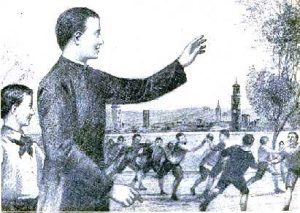
![Father John Baptist Tomasi [1866- †1954], 5th Superior General [1911-1922]](http://stigmatines.com/wp-content/uploads/2016/08/tomasigiovambattista-5b.bmp)
